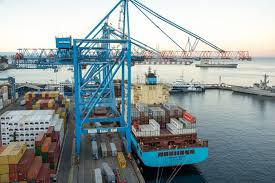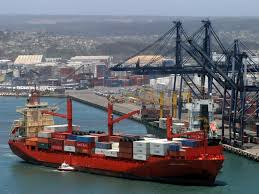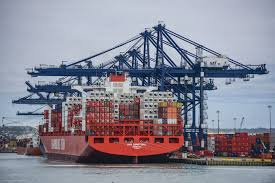How does the Port of San Antonio handle hazardous materials?

How does the Port of San Antonio handle hazardous materials?
How does the Port of San Antonio handle hazardous materials? The Port of San Antonio is committed to maintaining safety and environmental integrity, especially when it comes to handling hazardous materials.
Given the potential risks associated with these substances, stringent protocols are in place.
Here’s a detailed overview of how the Port of San Antonio manages hazardous materials effectively.
Regulatory Compliance
The port adheres to national and international regulations regarding the handling of hazardous materials.
Compliance with guidelines set by organizations such as the International Maritime Organization (IMO) is paramount.
These regulations dictate how hazardous materials should be packaged, labeled, and transported.
Strict adherence ensures that safety standards are upheld at all times.

Specialized Training
Personnel involved in the handling of hazardous materials receive specialized training.
Training covers safe handling procedures, emergency response, and proper use of personal protective equipment (PPE).
This education is essential for minimizing risks and ensuring the safety of workers and the environment.
Well-trained staff can effectively manage incidents should they arise.
Designated Storage Areas
The port has designated storage areas specifically for hazardous materials.
These areas are equipped with safety features, including containment systems and ventilation.
Properly segregating hazardous materials reduces the risk of accidents or chemical reactions.
Secure storage ensures that these materials are managed safely and responsibly.
Emergency Response Plans
Robust emergency response plans are in place for handling hazardous material incidents.
These plans include clear protocols for containment, evacuation, and reporting.
Regular drills and simulations help prepare staff for potential emergencies.
Being well-prepared enhances the port’s capability to respond swiftly and effectively.
Monitoring and Inspections
Continuous monitoring and regular inspections of hazardous material operations are conducted.
This ensures compliance with safety standards and identifies potential issues early.
Regular audits help maintain a high level of operational safety and readiness.
Proactive monitoring minimizes risks associated with hazardous materials.
Collaboration with Local Authorities
The Port of San Antonio collaborates with local emergency services and environmental agencies.
This partnership ensures coordinated responses in case of hazardous material incidents.
Engaging with local authorities enhances community safety and preparedness.
Collaborative efforts foster a strong safety network around the port.
Waste Management Protocols
Strict waste management protocols are followed for disposing of hazardous materials.
This includes proper treatment, recycling, or disposal methods that comply with environmental regulations.
Effective waste management protects the environment and local communities.
Ensuring that hazardous waste is handled responsibly is crucial for sustainability.
Public Awareness Initiatives
The port engages in public awareness initiatives to educate the community about hazardous materials.
Information campaigns inform local residents about safety measures and emergency protocols.
Promoting awareness fosters a sense of security among the community.
Transparent communication helps build trust between the port and the public.
The Port of San Antonio
The Port of San Antonio employs a comprehensive approach to handle hazardous materials safely and responsibly.
From regulatory compliance and specialized training to emergency response planning, every measure prioritizes safety.
Collaboration with local authorities and effective waste management practices further enhance the port’s commitment to environmental integrity.
Through these initiatives, the Port of San Antonio continues to ensure the safety of its operations and the surrounding community!





Leave a Reply